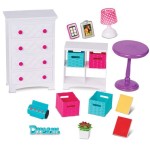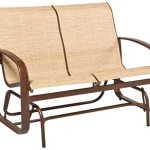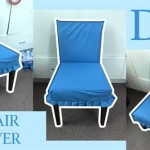Can Fleas Stay On Furniture? Understanding the Flea Life Cycle and Infestation
Fleas are wingless insects that are notorious for their parasitic behavior, primarily feeding on the blood of mammals and birds. While pets are often the primary target of fleas, understanding their ability to infest furniture is crucial for effective flea control. This article will explore the flea life cycle, the conditions that allow fleas to thrive on furniture, identifying infestations, and strategies for eradicating them.
The Flea Life Cycle: A Foundation for Understanding Infestation
To fully grasp how fleas can infest furniture, it's essential to understand their life cycle. This cycle consists of four distinct stages: egg, larva, pupa, and adult. Each stage presents different challenges and vulnerabilities when attempting to eliminate an infestation.
The flea life cycle begins with the adult female flea laying eggs. These eggs are small, smooth, and white, resembling grains of salt. A single female flea can lay hundreds of eggs during her lifespan. Crucially, these eggs are not sticky and easily fall off the host animal and into the surrounding environment. This is a key factor in how fleas infest furniture. Carpets, rugs, pet bedding, and yes, furniture, provide ample opportunity for flea eggs to settle and develop.
Once the eggs hatch, they emerge as larvae. Flea larvae are legless, worm-like creatures that feed on organic debris, including adult flea feces (also known as "flea dirt"). This flea dirt is essentially undigested blood excreted by the adult fleas, providing a vital food source for the larvae. Furniture crevices, upholstery folds, and the areas beneath cushions are ideal environments for larvae to thrive due to the accumulation of organic matter and flea dirt.
After several molts, the larvae eventually transform into pupae. The pupal stage is characterized by a silken cocoon that the larva spins around itself. This cocoon provides a protective barrier against environmental hazards and insecticides. The pupal stage can last from a few days to several months, depending on environmental conditions. Inside the cocoon, the flea undergoes metamorphosis, transforming into an adult flea.
Adult fleas emerge from the cocoon when stimulated by physical pressure, heat, vibrations, or carbon dioxide – all indicators that a suitable host is nearby. This emergence trigger is a survival mechanism, ensuring that the newly emerged adult flea has a high chance of finding a blood meal quickly. Adult fleas are highly mobile and can jump considerable distances, allowing them to easily move from furniture to pets or humans.
Factors Contributing to Flea Infestation on Furniture
Several factors influence the likelihood and severity of flea infestations on furniture. Understanding these factors is crucial for implementing preventative measures and addressing existing problems.
Pet Behavior: Pets that spend a significant amount of time on furniture are the primary vectors for introducing fleas into these areas. As pets rest, sleep, and groom themselves on furniture, they will shed flea eggs and flea dirt, creating a breeding ground for future generations. The type of fabric and the furniture's construction also play a role. Upholstery with deep crevices and textured surfaces offers more hiding places for fleas and their eggs than smooth, easily cleaned materials.
Environmental Conditions: Fleas thrive in warm, humid environments. Indoor temperatures that are comfortable for humans are also ideal for flea development. High humidity levels are particularly important for the survival of flea larvae, which are susceptible to desiccation. Areas near windows or doors, where humidity levels may be higher, can be particularly prone to infestation. Homes with poor ventilation and damp conditions are more susceptible to flea problems.
Lack of Regular Cleaning: Infrequent vacuuming and cleaning of furniture allow flea eggs, larvae, and pupae to accumulate and develop undisturbed. Regular vacuuming removes these stages of the flea life cycle, disrupting their development and reducing the overall infestation. Failing to clean pet bedding regularly also contributes to the problem since flea eggs and larvae will readily transfer from pet bedding to furniture and other areas of the home. Ignoring spills and stains on furniture can also promote flea development by providing organic matter as a food source for larvae.
Pre-Existing Infestations: If there is already a flea infestation on a pet or in other areas of the home, it is highly likely that fleas will also infest furniture. Adult fleas will readily move from one area to another in search of food and suitable breeding sites. Furthermore, flea eggs shed by infested pets will be dispersed throughout the environment, including onto furniture.
Identifying and Eradicating Fleas on Furniture
Recognizing the signs of a flea infestation on furniture is vital for prompt and effective treatment. Early detection can prevent the infestation from escalating and becoming more difficult to control. Once an infestation is identified, a multi-pronged approach is required to eliminate fleas from furniture and prevent their return.
Signs of Flea Infestation on Furniture: The most obvious sign of a flea infestation is the presence of adult fleas themselves. These can be seen jumping on the furniture, particularly when disturbed. However, adult fleas are only a small fraction of the total flea population. More subtle signs include flea dirt (small, black specks that resemble pepper) on the furniture surface or around the base of furniture legs. Small, white flea eggs may also be visible in crevices and folds of the upholstery. Pets that frequently scratch, bite, or lick themselves, especially when resting on furniture, may indicate the presence of fleas. Human bites, typically appearing as small, itchy red bumps, especially around the ankles, can also be a sign of fleas on furniture.
Vacuuming: Thorough and frequent vacuuming is essential for removing flea eggs, larvae, and pupae from carpets, rugs, and furniture. Use a vacuum cleaner with a strong suction and a crevice too to reach into tight spaces in the furniture. Be sure to vacuum under cushions, along seams, and in any areas where pets frequently rest. After vacuuming, immediately dispose of the vacuum bag in a sealed plastic bag to prevent fleas from escaping. Regular vacuuming helps disrupts the flea life cycle.
Laundering and Cleaning: Wash all washable items, such as cushion covers, blankets, and pet bedding, in hot water and dry them on high heat. This effectively kills fleas and their eggs. For furniture that cannot be washed, consider using a steam cleaner. The high heat of the steam can kill fleas and larvae. Be sure to test the steamer on an inconspicuous area first to ensure it does not damage the fabric. Cleaning furniture with appropriate upholstery cleaners can also help remove flea dirt and other organic matter that fleas feed on. Do use a pet-safe product to protect pets and family.
Insecticides: Insecticide treatments can be a necessary step in eliminating severe flea infestations, but should be used cautiously. When selecting an insecticide, consider using products specifically labeled for flea control and that are safe for use around pets and children. Always follow the manufacturer's instructions carefully. Insecticides containing ingredients such as pyrethrins, permethrin, or insect growth regulators (IGRs) are effective for killing adult fleas and preventing flea larvae from developing. Spot treat areas where fleas are most likely to be present, such as beneath cushions, along seams, and around the base of furniture. Consider consulting with a pest control professional for severe infestations or if you are unsure about applying insecticides yourself.
Preventative Measures: Once the flea infestation has been eradicated, it is important to implement preventative measures to avoid future problems. Regularly vacuum carpets, rugs, and furniture. Wash pet bedding frequently. Treat pets with flea control products recommended by a veterinarian. Keep the yard clean and well-maintained, as fleas can also breed outdoors and be brought inside by pets or humans. Sealing cracks and crevices in the home can help prevent fleas from entering. By implementing these preventative measures, you can create a less hospitable environment for fleas and minimize the risk of future infestations.

Can Fleas Live In Leather Furniture Second Hand Perabot Terpakai Skudai Johor Jb Malaysia

How Long Will Fleas Live In A House Without Pets Johnsons Veterinary Products

Can Fleas Live In Leather Furniture Second Hand Perabot Terpakai Skudai Johor Jb Malaysia

Getting Rid Of Fleas In Furniture Stopping Flea Bites

How Long Will Fleas Live In A House Without Pets

How Long Will Fleas Live In A House Without Pets

What Do Flea Eggs Look Like On Furniture Quora

How To Tell If You Have Fleas In Your Bed Ecoguard

Can Fleas Live In Carpet What Is The Flea Treatment

How Long Will Fleas Live In A House Without Pets Johnsons Veterinary Products
See Also








